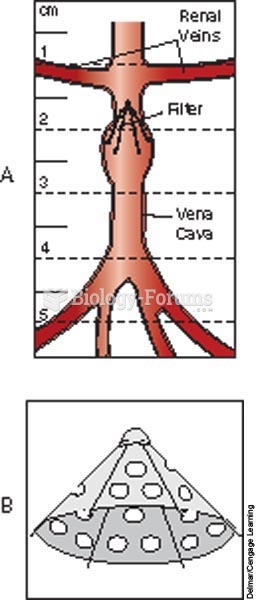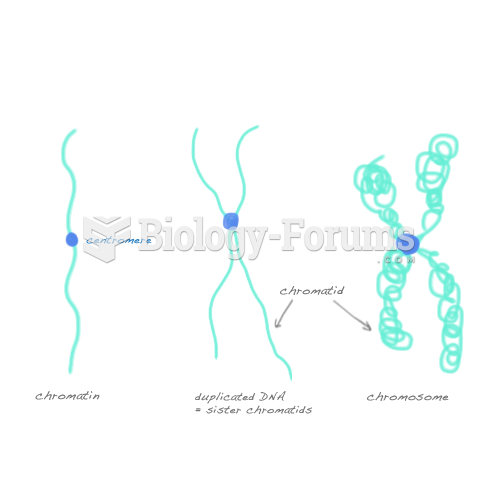|
|
|
Many people have small pouches in their colons that bulge outward through weak spots. Each pouch is called a diverticulum. About 10% of Americans older than age 40 years have diverticulosis, which, when the pouches become infected or inflamed, is called diverticulitis. The main cause of diverticular disease is a low-fiber diet.
The effects of organophosphate poisoning are referred to by using the abbreviations “SLUD” or “SLUDGE,” It stands for: salivation, lacrimation, urination, defecation, GI upset, and emesis.
Blood is approximately twice as thick as water because of the cells and other components found in it.
There are approximately 3 million unintended pregnancies in the United States each year.
In 1864, the first barbiturate (barbituric acid) was synthesized.
 Illustration of an embolus floating in an artery. The embolus will become lodged in a blood vessel t
Illustration of an embolus floating in an artery. The embolus will become lodged in a blood vessel t
 Retrograde pyelography (RP). Note the contrasting of the renal calyces, ureters, and bladder followi
Retrograde pyelography (RP). Note the contrasting of the renal calyces, ureters, and bladder followi





